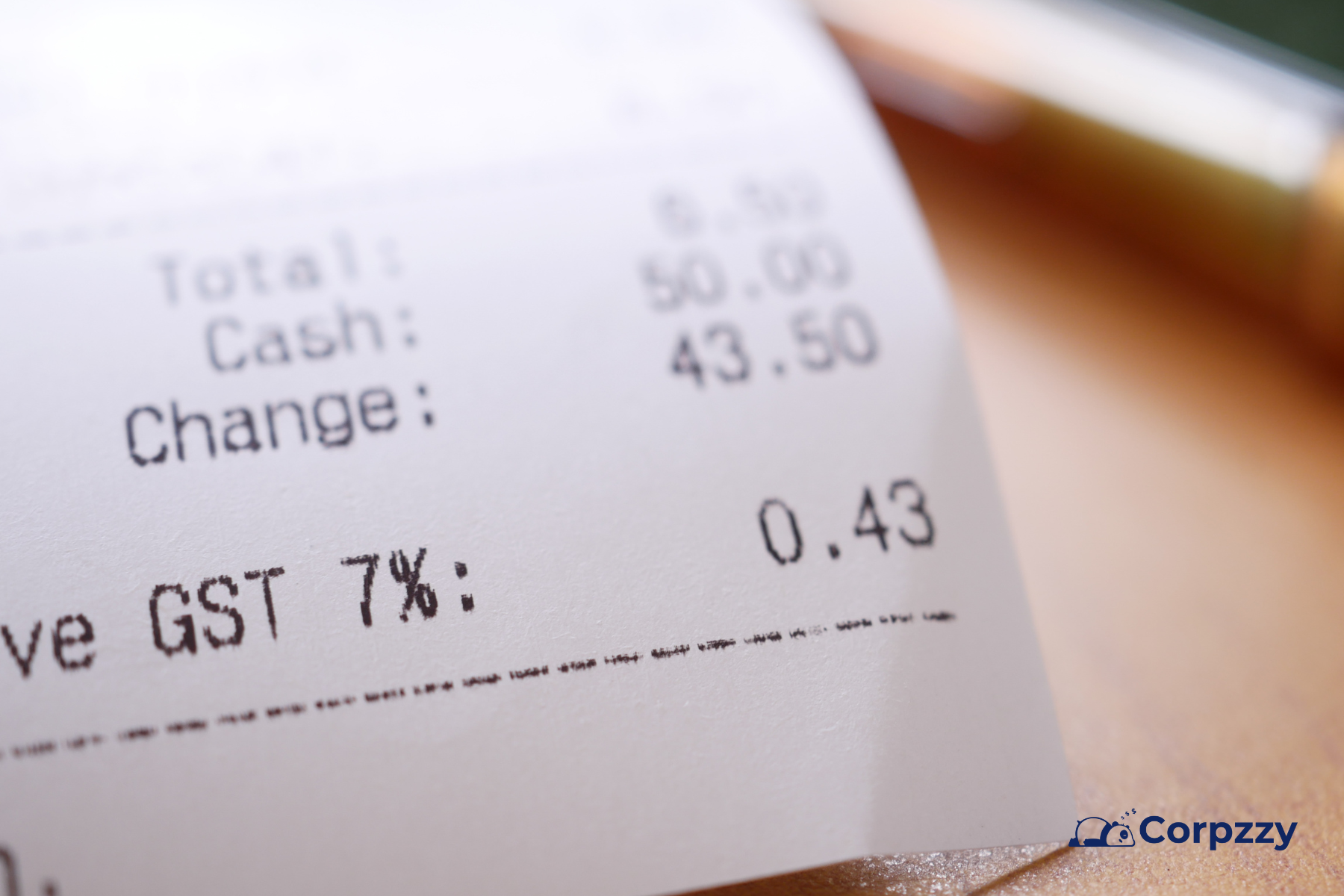A Comprehensive Guide to GST Filing and Requirements in Singapore
A Comprehensive Guide to GST Filing and Requirements in Singapore
Outline

Goods and Services Tax (GST) is a broad-based consumption tax levied on the sale of goods and services in Singapore. As businesses grow and engage in taxable transactions, understanding the GST filing process and requirements becomes essential to ensuring compliance with Singapore’s tax regulations. This article provides a detailed explanation of GST filing, the requirements for GST registration, filing deadlines, and the penalties for non-compliance.
What is Goods and Services Tax (GST)?
GST is a value-added tax (VAT) levied on the supply of goods and services in Singapore. The standard GST rate is 7%, which is applied to most goods and services sold in Singapore, including imports. GST is typically collected by businesses on behalf of the government. The tax is added to the price of the goods or services sold, and businesses are required to file regular GST returns to report their collections and payments to the Inland Revenue Authority of Singapore (IRAS).
Key Features of GST in Singapore:
- Tax on consumption: GST is ultimately paid by the end consumer of goods or services.
- Input tax and output tax: Businesses collect output tax on sales and pay input tax on purchases. The difference between output tax and input tax is either paid to or refunded by IRAS.
- Exemptions: Some goods and services are exempt from GST, including financial services, certain health services, and residential property sales.
Who Needs to Register for GST?
In Singapore, businesses must register for GST if they meet specific criteria set by IRAS. GST registration is required if the business’s annual taxable turnover exceeds S$1 million in the past 12 months or if the business anticipates that its turnover will exceed this threshold in the next 12 months. However, businesses below this threshold may still voluntarily register for GST if they wish to reclaim GST on their purchases.
Types of GST Registration
- Compulsory Registration: If your business’s taxable turnover exceeds S$1 million, you must register for GST with IRAS. This applies to both Singaporean businesses and foreign businesses with taxable supplies in Singapore.
- Voluntary Registration: If your business’s taxable turnover is below S$1 million, you may voluntarily register for GST. This can be beneficial if you want to reclaim the GST on your business purchases.
- Group Registration: Related companies can apply to be registered as a group for GST purposes. This allows businesses to offset their output tax and input tax within the group, reducing the amount of GST payable to IRAS.
- Exemption for Small Businesses: Small businesses that are below the S$1 million threshold may apply for exemption from GST registration, provided they do not make taxable supplies exceeding the threshold in the future.
How to Register for GST?
To register for GST, businesses must submit a GST registration application to IRAS. This can be done online via the IRAS myTax Portal. The following documents and information will be required during the registration process:
- Business details (name, address, UEN – Unique Entity Number)
- Financial information (including revenue and business activities)
- A copy of the business’s constitution or other legal documents
- Information on the business’s directors, owners, or partners
Once your application is submitted, IRAS will review your request, and if approved, your GST registration number will be issued. You will also be assigned a GST reporting period, which could be either quarterly or annually.
GST Filing Requirements
Once a business is registered for GST, it is required to file regular GST returns to IRAS. The frequency of GST filing depends on the reporting period assigned by IRAS. GST returns must be filed electronically through the myTax Portal.
Filing Deadlines
Quarterly Filing: Businesses are typically assigned quarterly GST filing periods. The filing deadlines for each quarter are as follows:
- Quarter 1 (January – March): File by 30th April.
- Quarter 2 (April – June): File by 31st July.
- Quarter 3 (July – September): File by 31st October.
- Quarter 4 (October – December): File by 31st January.
Annual Filing: If your company’s annual revenue is less than S$1 million, you may be eligible for annual GST filing. This means you will file a GST return once a year, typically by 31st January for the previous year.
Content of a GST Return
The GST return is a summary of your business’s taxable activities for the reporting period. Businesses must include the following information:
- Output Tax: The total GST collected from customers on taxable sales made during the period.
- Input Tax: The GST paid on business purchases, including goods, services, and imports.
- Net GST Payable or Refundable: This is the difference between output tax and input tax. If the output tax exceeds the input tax, the business must pay the difference to IRAS. If the input tax exceeds the output tax, IRAS will refund the excess to the business.
How to Calculate GST Payable
The formula for calculating the net GST payable or refundable is:
Net GST Payable = Output Tax – Input Tax
If the output tax is greater than the input tax, the business will pay the difference to IRAS. If the input tax is greater than the output tax, IRAS will refund the excess.
For example, if your business collected S$10,000 in GST from sales and paid S$6,000 in GST on purchases, the net GST payable will be:
S$10,000 (output tax) – S$6,000 (input tax) = S$4,000 (payable)
GST Filing Process
- Prepare Your Records: Gather all relevant documents, such as sales invoices, purchase invoices, receipts, and bank statements, to accurately calculate output and input tax.
- Log in to myTax Portal: Go to the IRAS myTax Portal and log in using your SingPass or CorpPass.
- Submit Your GST Return: Fill out the GST return form, ensuring all information is accurate. Submit the form electronically.
- Payment or Refund: If GST is payable, the payment can be made through the myTax Portal or by other approved methods. If a refund is due, IRAS will process the refund after reviewing the return.
Penalties for Non-Compliance
It is crucial for businesses to comply with GST filing requirements, as failure to do so can result in significant penalties, including:
- Late Filing: A penalty of S$200 is imposed for late submission of GST returns, with further penalties if the delay is prolonged.
- Late Payment: If the GST payable is not paid by the due date, interest charges will accrue at a rate of 5% per annum on the outstanding amount.
- Incorrect Filing: Filing inaccurate or false GST returns can result in fines or even criminal prosecution, depending on the severity of the mistake.
Regular, accurate filing of GST returns ensures your business stays compliant with Singapore’s tax laws and avoids unnecessary penalties.
GST Refunds
If your business has paid more GST on purchases than it has collected on sales, you can claim a GST refund. The process for claiming refunds is simple and can be done as part of your regular GST filing. The refund is processed by IRAS once the GST return has been reviewed and approved.
How Long Does it Take to Get a Refund?
Refunds are typically processed within 30 days after submission, but the timeline may vary depending on the complexity of the claim.
Conclusion
GST filing in Singapore is a crucial responsibility for businesses that are registered for GST. Ensuring accurate, timely submission of GST returns helps businesses remain compliant with the law and avoid penalties. By understanding the filing requirements, deadlines, and processes, businesses can effectively manage their GST obligations and keep operations running smoothly. Whether your business is small or large, staying on top of your GST responsibilities will help you avoid unnecessary costs and ensure continued success in the Singapore market.
For assistance with GST registration, filing, or compliance, it’s advisable to consult with a professional tax advisor or corporate service provider to navigate the complexities of the process.
About The Author
Related Business Articles
Share This Story, Choose Your Platform!


Goods and Services Tax (GST) is a broad-based consumption tax levied on the sale of goods and services in Singapore. As businesses grow and engage in taxable transactions, understanding the GST filing process and requirements becomes essential to ensuring compliance with Singapore’s tax regulations. This article provides a detailed explanation of GST filing, the requirements for GST registration, filing deadlines, and the penalties for non-compliance.
What is Goods and Services Tax (GST)?
GST is a value-added tax (VAT) levied on the supply of goods and services in Singapore. The standard GST rate is 7%, which is applied to most goods and services sold in Singapore, including imports. GST is typically collected by businesses on behalf of the government. The tax is added to the price of the goods or services sold, and businesses are required to file regular GST returns to report their collections and payments to the Inland Revenue Authority of Singapore (IRAS).
Key Features of GST in Singapore:
- Tax on consumption: GST is ultimately paid by the end consumer of goods or services.
- Input tax and output tax: Businesses collect output tax on sales and pay input tax on purchases. The difference between output tax and input tax is either paid to or refunded by IRAS.
- Exemptions: Some goods and services are exempt from GST, including financial services, certain health services, and residential property sales.
Who Needs to Register for GST?
In Singapore, businesses must register for GST if they meet specific criteria set by IRAS. GST registration is required if the business’s annual taxable turnover exceeds S$1 million in the past 12 months or if the business anticipates that its turnover will exceed this threshold in the next 12 months. However, businesses below this threshold may still voluntarily register for GST if they wish to reclaim GST on their purchases.
Types of GST Registration
- Compulsory Registration: If your business’s taxable turnover exceeds S$1 million, you must register for GST with IRAS. This applies to both Singaporean businesses and foreign businesses with taxable supplies in Singapore.
- Voluntary Registration: If your business’s taxable turnover is below S$1 million, you may voluntarily register for GST. This can be beneficial if you want to reclaim the GST on your business purchases.
- Group Registration: Related companies can apply to be registered as a group for GST purposes. This allows businesses to offset their output tax and input tax within the group, reducing the amount of GST payable to IRAS.
- Exemption for Small Businesses: Small businesses that are below the S$1 million threshold may apply for exemption from GST registration, provided they do not make taxable supplies exceeding the threshold in the future.
How to Register for GST?
To register for GST, businesses must submit a GST registration application to IRAS. This can be done online via the IRAS myTax Portal. The following documents and information will be required during the registration process:
- Business details (name, address, UEN – Unique Entity Number)
- Financial information (including revenue and business activities)
- A copy of the business’s constitution or other legal documents
- Information on the business’s directors, owners, or partners
Once your application is submitted, IRAS will review your request, and if approved, your GST registration number will be issued. You will also be assigned a GST reporting period, which could be either quarterly or annually.
GST Filing Requirements
Once a business is registered for GST, it is required to file regular GST returns to IRAS. The frequency of GST filing depends on the reporting period assigned by IRAS. GST returns must be filed electronically through the myTax Portal.
Filing Deadlines
Quarterly Filing: Businesses are typically assigned quarterly GST filing periods. The filing deadlines for each quarter are as follows:
- Quarter 1 (January – March): File by 30th April.
- Quarter 2 (April – June): File by 31st July.
- Quarter 3 (July – September): File by 31st October.
- Quarter 4 (October – December): File by 31st January.
Annual Filing: If your company’s annual revenue is less than S$1 million, you may be eligible for annual GST filing. This means you will file a GST return once a year, typically by 31st January for the previous year.
Content of a GST Return
The GST return is a summary of your business’s taxable activities for the reporting period. Businesses must include the following information:
- Output Tax: The total GST collected from customers on taxable sales made during the period.
- Input Tax: The GST paid on business purchases, including goods, services, and imports.
- Net GST Payable or Refundable: This is the difference between output tax and input tax. If the output tax exceeds the input tax, the business must pay the difference to IRAS. If the input tax exceeds the output tax, IRAS will refund the excess to the business.
How to Calculate GST Payable
The formula for calculating the net GST payable or refundable is:
Net GST Payable = Output Tax – Input Tax
If the output tax is greater than the input tax, the business will pay the difference to IRAS. If the input tax is greater than the output tax, IRAS will refund the excess.
For example, if your business collected S$10,000 in GST from sales and paid S$6,000 in GST on purchases, the net GST payable will be:
S$10,000 (output tax) – S$6,000 (input tax) = S$4,000 (payable)
GST Filing Process
- Prepare Your Records: Gather all relevant documents, such as sales invoices, purchase invoices, receipts, and bank statements, to accurately calculate output and input tax.
- Log in to myTax Portal: Go to the IRAS myTax Portal and log in using your SingPass or CorpPass.
- Submit Your GST Return: Fill out the GST return form, ensuring all information is accurate. Submit the form electronically.
- Payment or Refund: If GST is payable, the payment can be made through the myTax Portal or by other approved methods. If a refund is due, IRAS will process the refund after reviewing the return.
Penalties for Non-Compliance
It is crucial for businesses to comply with GST filing requirements, as failure to do so can result in significant penalties, including:
- Late Filing: A penalty of S$200 is imposed for late submission of GST returns, with further penalties if the delay is prolonged.
- Late Payment: If the GST payable is not paid by the due date, interest charges will accrue at a rate of 5% per annum on the outstanding amount.
- Incorrect Filing: Filing inaccurate or false GST returns can result in fines or even criminal prosecution, depending on the severity of the mistake.
Regular, accurate filing of GST returns ensures your business stays compliant with Singapore’s tax laws and avoids unnecessary penalties.
GST Refunds
If your business has paid more GST on purchases than it has collected on sales, you can claim a GST refund. The process for claiming refunds is simple and can be done as part of your regular GST filing. The refund is processed by IRAS once the GST return has been reviewed and approved.
How Long Does it Take to Get a Refund?
Refunds are typically processed within 30 days after submission, but the timeline may vary depending on the complexity of the claim.
Conclusion
GST filing in Singapore is a crucial responsibility for businesses that are registered for GST. Ensuring accurate, timely submission of GST returns helps businesses remain compliant with the law and avoid penalties. By understanding the filing requirements, deadlines, and processes, businesses can effectively manage their GST obligations and keep operations running smoothly. Whether your business is small or large, staying on top of your GST responsibilities will help you avoid unnecessary costs and ensure continued success in the Singapore market.
For assistance with GST registration, filing, or compliance, it’s advisable to consult with a professional tax advisor or corporate service provider to navigate the complexities of the process.
Share This Story, Choose Your Platform!




